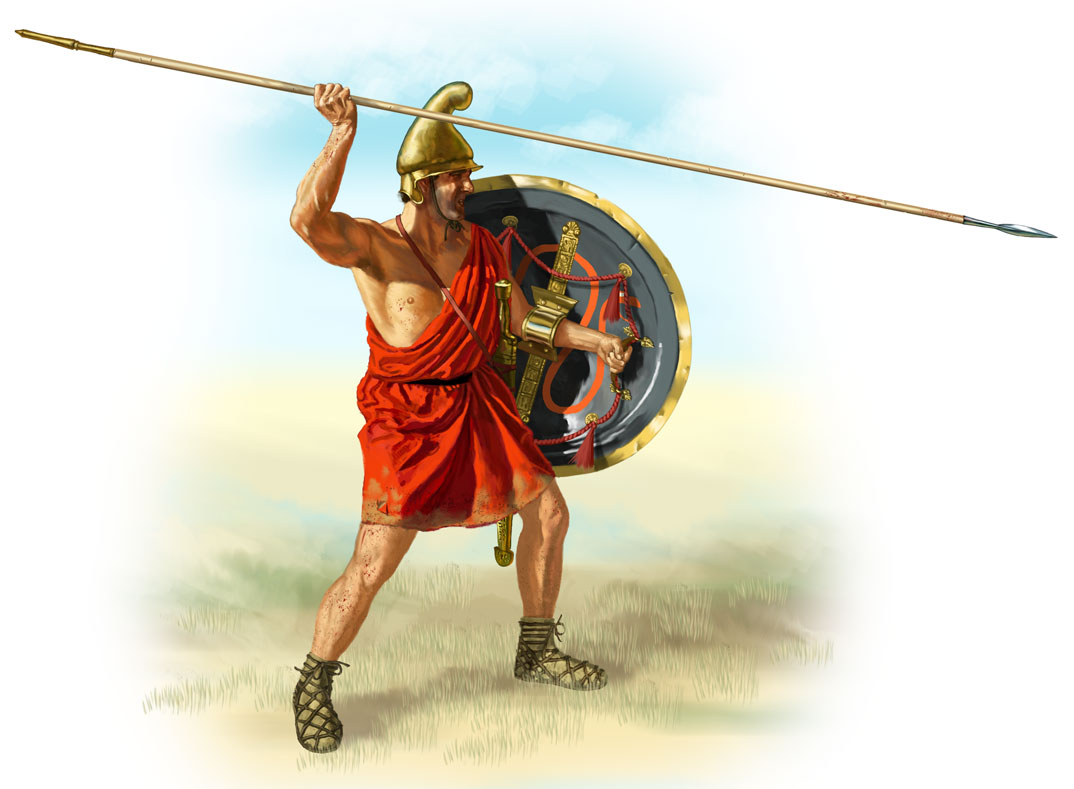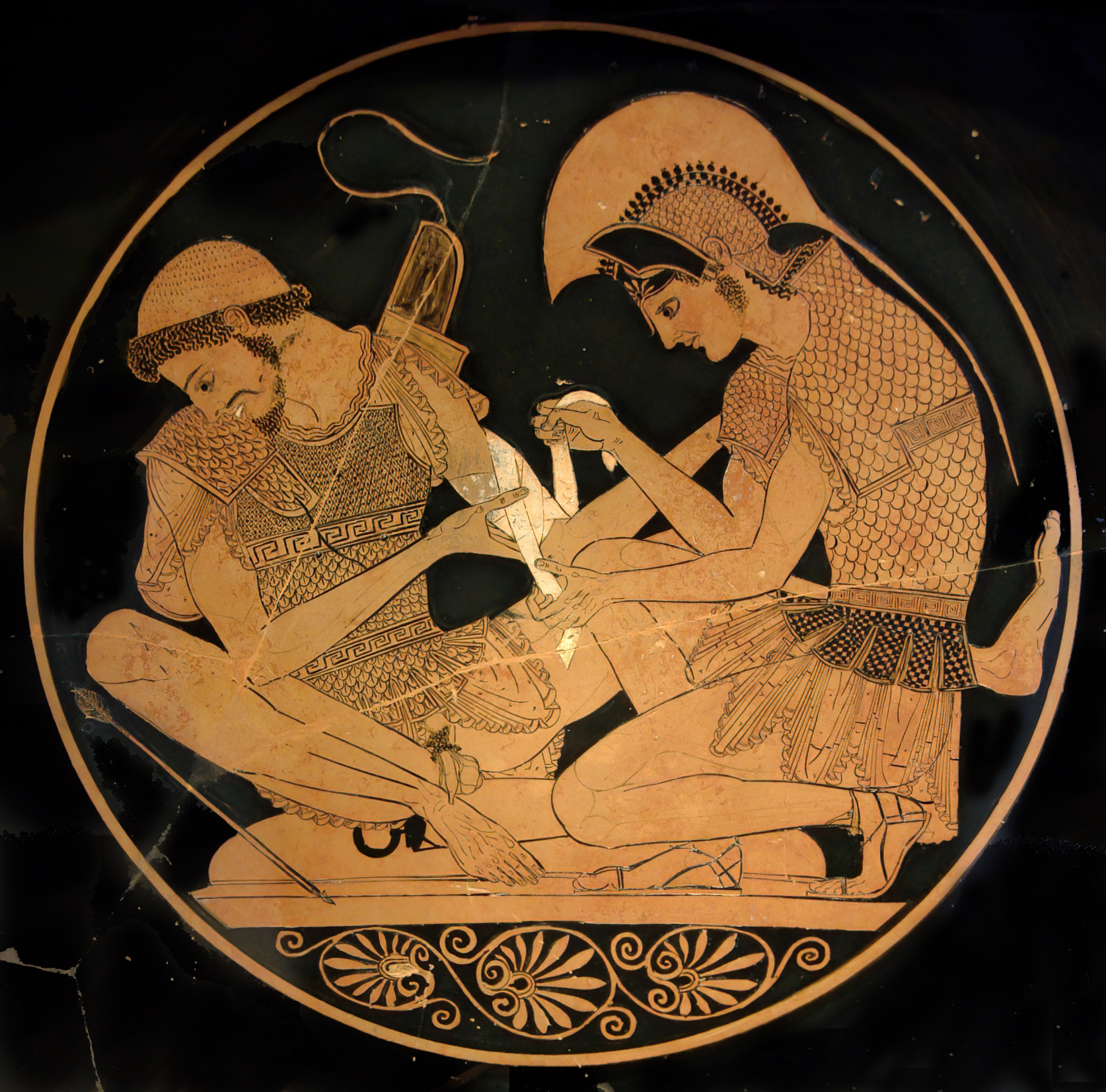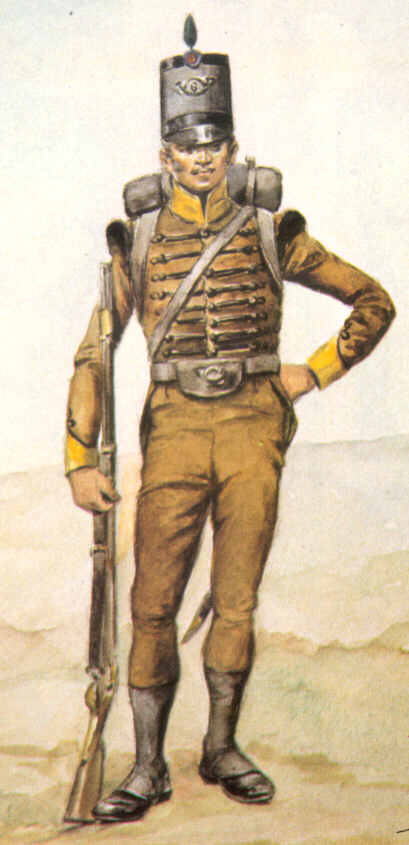|
Hypaspists
A hypaspist ( "shield bearer" or "shield covered") is a squire, man at arms, or "shield carrier". In Homer, Deiphobos advances "" () or under cover of his shield. By the time of Herodotus (426 BC), the word had come to mean a high status soldier as is strongly suggested by Herodotus in one of the earliest known uses: A similar usage occurs in Euripides's play '' Rhesus'' and another in his ''Phoenissae''. Xenophon was deserted by his hypaspist in a particularly sticky situation. A hypaspist would differ from a skeuophoros in most cases because the "shield bearer" is a free warrior and the "baggage carrier" was probably usually a slave. The word may have had Homeric and heroic connotations that led Philip II of Macedon to use it for an elite military unit. This unit, known as the Hypaspistai, or hypaspists, was probably armed in the hoplite manner, with a large concave shield (Aspis) and a spear (Dory (spear), Dory), in addition to spolas or linothorax body-armor, hoplite' ... [...More Info...] [...Related Items...] OR: [Wikipedia] [Google] [Baidu] |
Hoplite
Hoplites ( ) ( ) were citizen-soldiers of Ancient Greek city-states who were primarily armed with spears and shields. Hoplite soldiers used the phalanx formation to be effective in war with fewer soldiers. The formation discouraged the soldiers from acting alone, for this would compromise the formation and minimize its strengths. The hoplites were primarily represented by free citizens – propertied farmers and artisans – who were able to afford a linen or bronze armour suit and weapons (estimated at a third to a half of its able-bodied adult male population). Some states maintained a small elite professional unit, known as the '' epilektoi'' or logades ('the chosen') because they were picked from the regular citizen infantry. These existed at times in Athens, Sparta, Argos, Thebes, and Syracuse, among other places. Hoplite soldiers made up the bulk of ancient Greek armies. In the 8th or 7th century BC, Greek armies adopted the phalanx formation. The formatio ... [...More Info...] [...Related Items...] OR: [Wikipedia] [Google] [Baidu] |
Linothorax
The ''linothorax'' (, from the , ) is a type of upper body armor that was used throughout the ancient Mediterranean world. The term ''linothorax'' is a modern term based on the Greek , which means "wearing a breastplate of linen"; a number of ancient Greek and Latin texts from the 6th century BC to the third century AD mention () (Greek) or (Latin) which means 'linen body armour'. These are usually equated with some of the armour shown in sculptures and paintings from Italy and Greece from 575 BC onwards. Very little is known about how ancient linen armour was made. Linen armour in other cultures was usually quilted and stuffed with loose fibre or stitched together many layers thick, but it could also have been made with a special weave called twining which creates a thick, tough fabric. The theory that it was made of layers of linen glued together comes from a mistranslation of a summary of a description of medieval armour in 1869. By the late 6th century BC, many paintings and ... [...More Info...] [...Related Items...] OR: [Wikipedia] [Google] [Baidu] |
Macedonian Phalanx
The Macedonian phalanx () was an infantry formation developed by Philip II from the classical Greek phalanx, of which the main innovation was the use of the sarissa, a 6-metre pike. It was famously commanded by Philip's son Alexander the Great during his conquest of the Achaemenid Empire between 334 and 323 BC. The Macedonian phalanx model then spread throughout the Hellenistic world, where it became the standard battle formation for pitched battles. During the Macedonian Wars against the Roman Republic (214–148 BC), the phalanx appeared obsolete against the more manoeuvrable Roman legions. Development In 359 BC, following the Macedonian defeat by the Illyrians, which killed the majority of Macedonia's army and King Perdiccas III of Macedon, Perdiccas' brother Philip II took the throne. Philip II was a hostage in Thebes for much of his youth (367–360), where he witnessed the combat tactics of the general Epaminondas, which then influenced his restructuring of the in ... [...More Info...] [...Related Items...] OR: [Wikipedia] [Google] [Baidu] |
Military Tactics
Military tactics encompasses the art of organizing and employing fighting forces on or near the battlefield. They involve the application of four battlefield functions which are closely related – kinetic or firepower, Mobility (military), mobility, protection or security, and Shock tactics, shock action. Tactics are a separate function from command and control and logistics. In contemporary military science, tactics are the lowest of three levels of warfighting, the higher levels being the military strategy, strategic and Operational level of war, operational levels. Throughout history, there has been a shifting balance between the four tactical functions, generally based on the application of military technology, which has led to one or more of the tactical functions being dominant for a period of time, usually accompanied by the dominance of an associated Combat arms, fighting arm deployed on the battlefield, such as infantry, artillery, cavalry or tanks. Tactical functions Ki ... [...More Info...] [...Related Items...] OR: [Wikipedia] [Google] [Baidu] |
Sarissa
The sarissa or sarisa was a long spear or pike about in length. It was introduced by Philip II of Macedon and was used in his Macedonian phalanxes as a replacement for the earlier dory, which was considerably shorter. These longer spears improved the strength of the phalanx by extending the rows of overlapping weapons projecting towards the enemy. After the conquests of Alexander the Great, the sarissa was a mainstay during the Hellenistic era (4th–1st centuries BCE) by the Hellenistic armies of the diadochi Greek successor states of Alexander's empire, as well as some of their rivals. Composition and utility The sarissa is made of two core parts: a long wooden shaft and a metal tip. A third part that may have existed for some sarissas was a metal spear-butt at the reverse end. The metal butt of the sarissa could be used to safely stow it in the ground without damaging the shaft when not in use. Two types of wood are favored as likely candidates for the shaft: ... [...More Info...] [...Related Items...] OR: [Wikipedia] [Google] [Baidu] |
Pike (weapon)
A pike is a long thrusting spear formerly used in European warfare from the Late Middle Ages and most of the early modern warfare, early modern period, and wielded by infantry, foot soldiers deployed in pike square formation, until it was largely replaced by bayonet-equipped muskets. The pike was particularly well known as the primary weapon of Spanish tercios, Swiss mercenary, German Landsknecht units and French sans-culottes. A similar weapon, the sarissa, had been used in classical antiquity, antiquity by Alexander the Great's Ancient Macedonians, Macedonian phalanx infantry. Design The pike was a long weapon, varying considerably in size, from long. Generally, a spear becomes a pike when it is too long to be wielded with one hand in combat. It was approximately in weight, with the 16th-century military writer John Smith (High Sheriff of Kent), Sir John Smythe recommending lighter rather than heavier pikes. It had a wooden shaft with an iron or steel spearhead affixed. Th ... [...More Info...] [...Related Items...] OR: [Wikipedia] [Google] [Baidu] |
Cavalry
Historically, cavalry (from the French word ''cavalerie'', itself derived from ''cheval'' meaning "horse") are groups of soldiers or warriors who Horses in warfare, fight mounted on horseback. Until the 20th century, cavalry were the most mobile of the combat arms, operating as light cavalry in the roles of reconnaissance, Screening (tactical), screening, and skirmisher, skirmishing, or as heavy cavalry for decisive economy of force and shock attacks. An individual soldier in the cavalry is known by a number of designations depending on era and tactics, such as a cavalryman, Equestrianism, horseman, trooper (rank), trooper, cataphract, knight, Drabant Corps of Charles XII, drabant, hussar, uhlan, mamluk, cuirassier, lancer, dragoon, samurai or horse archer. The designation of ''cavalry'' was not usually given to any Military animal, military forces that used other animals or platforms for mounts, such as chariots, Camel cavalry, camels or War elephant, elephants. Infantry who m ... [...More Info...] [...Related Items...] OR: [Wikipedia] [Google] [Baidu] |
Light Infantry
Light infantry refers to certain types of lightly equipped infantry throughout history. They have a more mobile or fluid function than other types of infantry, such as heavy infantry or line infantry. Historically, light infantry often fought as Reconnaissance, scouts, Raid (military), raiders, and skirmishers. These are loose formations that fight ahead of the main army to harass, delay, disrupt supply lines, engage the enemy's own skirmishing forces, and generally "soften up" an enemy before the main battle. Light infantrymen were also often responsible for Screening (tactical), screening the main body of a military formation. Following World War II, the term "light infantry" has evolved to include rapid-deployment units (including commando and Airborne forces, airborne units) that emphasize speed and mobility over armor and firepower. Some units or battalions that historically held a skirmishing role retain their designation "light infantry" for the sake of tradition. His ... [...More Info...] [...Related Items...] OR: [Wikipedia] [Google] [Baidu] |
Alexander The Great
Alexander III of Macedon (; 20/21 July 356 BC – 10/11 June 323 BC), most commonly known as Alexander the Great, was a king of the Ancient Greece, ancient Greek kingdom of Macedonia (ancient kingdom), Macedon. He succeeded his father Philip II of Macedon, Philip II to the throne in 336 BC at the age of 20 and spent most of his ruling years conducting Wars of Alexander the Great, a lengthy military campaign throughout West Asia, Western Asia, Central Asia, parts of South Asia, and ancient Egypt, Egypt. By the age of 30, he had created one of the List of largest empires, largest empires in history, stretching from History of Greece, Greece to northwestern History of India, India. He was undefeated in battle and is widely considered to be one of history's greatest and most successful military commanders. Until the age of 16, Alexander was tutored by Aristotle. In 335 BC, shortly after his assumption of kingship over Macedon, he Alexander's Balkan campaign, campaigned in the Bal ... [...More Info...] [...Related Items...] OR: [Wikipedia] [Google] [Baidu] |
Xiphos
The ''xiphos'' ( ; plural ''xiphe'', ) is a double-edged, one-handed Iron Age straight shortsword used by the ancient Greeks. It was a secondary battlefield weapon for the Greek armies after the dory or javelin. The classic blade was generally about long, although the Spartans supposedly preferred to use blades as short as around the era of the Greco-Persian Wars. Etymology Stone's ''Glossary'' has ''xiphos'' being a name used by Homer for a sword. The entry in the book says that the sword had a double-edged blade widest at about two-thirds of its length from the point, and ending in a very long point. The word is attested in Mycenaean Greek Linear B form as , '. A relation to Arabic '' saifun'' ('a sword') and Egyptian ''sēfet'' has been suggested, although this does not explain the presence of a labiovelar in Mycenaean. One suggestion connects Ossetic ''äxsirf'' "sickle", which would point to a virtual Indo-European ''*kwsibhro-''. Construction Most ''xiphe'' ... [...More Info...] [...Related Items...] OR: [Wikipedia] [Google] [Baidu] |
Sarissa
The sarissa or sarisa was a long spear or pike about in length. It was introduced by Philip II of Macedon and was used in his Macedonian phalanxes as a replacement for the earlier dory, which was considerably shorter. These longer spears improved the strength of the phalanx by extending the rows of overlapping weapons projecting towards the enemy. After the conquests of Alexander the Great, the sarissa was a mainstay during the Hellenistic era (4th–1st centuries BCE) by the Hellenistic armies of the diadochi Greek successor states of Alexander's empire, as well as some of their rivals. Composition and utility The sarissa is made of two core parts: a long wooden shaft and a metal tip. A third part that may have existed for some sarissas was a metal spear-butt at the reverse end. The metal butt of the sarissa could be used to safely stow it in the ground without damaging the shaft when not in use. Two types of wood are favored as likely candidates for the shaft: ... [...More Info...] [...Related Items...] OR: [Wikipedia] [Google] [Baidu] |







